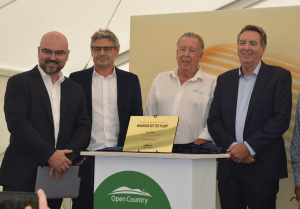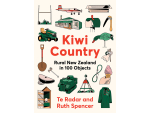More than 150 countries are involved, and by export value, 72% goes to developing countries. A quarter of New Zealand’s milk is sold through the global dairy trade auction, which effectively sets the global price for milk.
In contrast, the meat industry has little impact globally. Calls for the establishment of a meat equivalent of Fonterra are abating as the Meat Industry Excellence Group reassesses the reality of the comparison. But the challenge of achieving an improved income for meat producers remains.
The issue is the schedule price – the equivalent to the milk solids price in the dairy industry – and the fact that profitability for meat is not as good as for milk.
Profitability is a large part of the drive to convert beef and sheep farms into dairy farms; it is also why farmers do what is termed ‘the Sunday night ring-a-round’ to see which of the meat companies can offer the greatest schedule price for the animals they want to send to the abattoir that week. Silver Fern Farms, New Zealand’s biggest meat processor, estimates 30-40% of supply is not confirmed.
This uncertainty is a major challenge in terms of efficiency in keeping the meat processing works occupied and workers employed. Perhaps worse is the challenge of fulfilling supermarket contracts. The consequence is the spot market – where the companies offer higher prices to induce farmers to supply them with animals.
The unintended consequence of this potential incentive is farmers not locking into the contracts that the companies would prefer.
Innovative thinking is required to make contracts valuable for all parties. The current mindset appears from the outside (though industry leaders don’t always agree) to be that of a trader playing one off against the other for short term gain. Although this might allow delivery of what is required in quality and quantity on time, the cost is great. Time and energy are involved in trying to overcome the uncertainty at all stages.
Warwick Lissaman, Seddon sheep farmer and vice-president of the New Zealand Grassland Association, knows that contracting 100% is never going to be possible. His suggestion is that 20% of suppliers might be able to contract to supply ‘on demand’, achieving a premium for agreeing to the flexibility because it might involve increased feeding with supplements. He also suggests that these ‘on demand’ suppliers should be focused on quality not quantity.
Having 80% of supply on contract and the rest on ‘on-demand’ contract could be part of the answer. Enabling surety of supply would, however, involve feeding to requirement. In the vegetable industry, for instance frozen peas and fresh broccoli, growers contract to apply fertiliser and irrigation to achieve yield perfection by a certain day.
Dry stock farmers in future might need to have supplement on hand to replace any grass that doesn’t grow to achieve weight by the due date. This means costs of production would increase, as would the complexity of the business.
Different strategies are to be considered by a group whose membership is still being discussed. Informed heads without baggage will be required – perhaps a business analyst, progressive large animal veterinarian/farmer, agricultural strategist and some young blood. The recommendations could then be tested on people already in the industry.
However, the clear message is that the current system of meat production is not creating viable businesses. At least part of the answer is creating loyalty of supply in the meat producers,
but an equal part is education of the consumer about the cost of meat production.
• Jacqueline Rowarth is professor of agribusiness, The University of Waikato and president of the New Zealand Grassland Association.
















